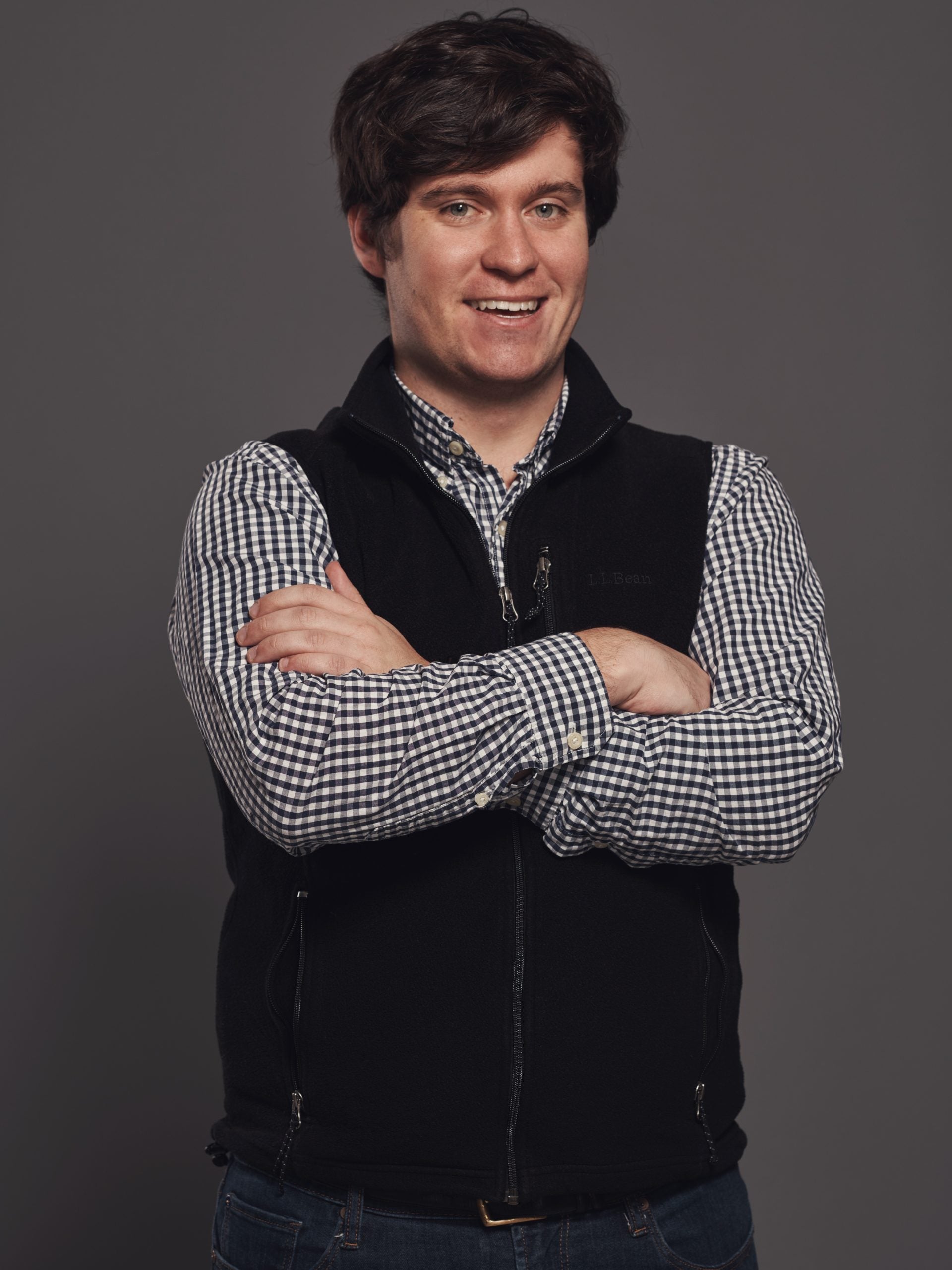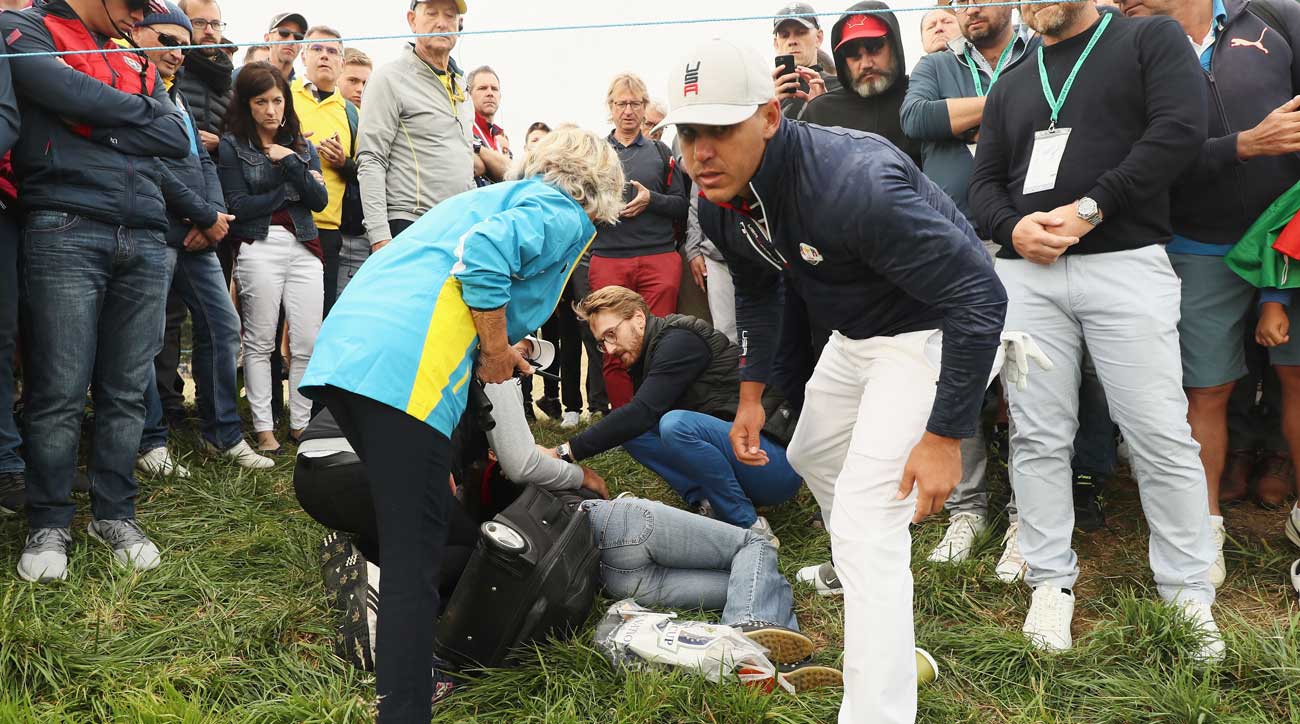Ryder Cup spectator Corine Remande left Le Golf National last week with permanent vision loss in her right eye after Brooks Koepka’s errant tee shot on the par-4 6th hole on Friday morning struck her in the head. After being released from the hospital, Remande, 49, said that she had planned to sue the event organizers because “officials did not shout any warning as the player’s ball went into the crowd.”
The European tour said in a statement that they “can confirm that ‘fore’ was shouted several times but also appreciate how hard it can be to know when and where every ball is struck if you are in the crowd.”
Remande isn’t the first fan to get plunked at a professional event. Far from it. Tiger Woods hit a fan in the neck with his opening tee shot at the 2010 Memorial. Pat Perez beaned not one but two spectators in a single round at the 2017 Genesis Open, prompting Shane Lowry to tweet, “What’s it going to take for players to start shouting fore?” After Ernie Els’s opening tee shot at the 2014 British Open struck a fan in the face, he was so rattled that he went on to shoot a 79. “I was trying to hit it left,” he said, “and should have told the starters to move the people back on the left side, but I didn’t do that.”
All of which begs the question: Can tournaments or golfers be held legally liable when an errant shot injures a fan?
Not likely.
The same legal standards apply to both pro golf events and recreational golf, but it is especially difficult to claim damages at a PGA Tour event, according to several attorneys with expertise on golf law. To begin with, the risks of golf-spectating are printed right there on the back of PGA Tour tickets. A disclaimer states that spectators “voluntarily assume all risk and danger incidental to the game of golf.”
California-based attorney Ed Smilow said an injured fan could theoretically have success making a claim against the host course if he or she could prove that the course was laid out with reckless disregard for spectator safety.

“Golf courses are responsible for maintaining a safe course for golfers and spectators,” Smilow said. “Courses must take reasonable measures to protect those who use it and themselves legally.”
Making a case against the golfer who hit the ball is an even tougher legal road to hoe. “The golfer cannot be held liable because they cannot control the ball,” Smilow said. “No golfer has a perfect shot every time. Even Ben Hogan had plenty of bad shots. It’s going to be hard to make a claim against any golfer.”
Smilow said the only way a golfer could be found liable if he or she were to deliberately fire a shot into a crowd.
Randy Maniloff, a Philadelphia-based attorney at the firm White and Williams, said that the best way to interpret and understand how courts will rule in golf injuries is to look at Major League Baseball. What has been dubbed “the baseball rule” dictates that stadium operators have an obligation to provide safe seats to fans and alert them of the dangers. If fans choose to spectate from a seating area that is not considered safe, they are accepting an assumed risk.
“Stadiums are responsible for providing ample protection and safety to fans,” Maniloff said. “Courts have ruled in favor of stadiums and it’s very hard to win against them.”
The court would apply the same standard to a golf course by assessing whether or not the club has provided both safe standing areas for spectators and reasonable warning for fans of the risks if they choose to stand in another location.
“Unless you can show that there was something inherently dangerous, the court would not allow someone to recover,” Maniloff said. “They would say that there are enough safe places to take in golf.”
So, if you’re a golf fan worried about getting bonked, stay out of the landing zones — or, better yet, take in the action from the safest place of all: behind a tee box.








